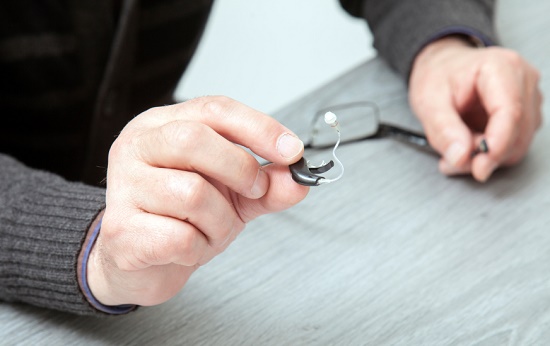
Murphy’s Law tells us that “if anything can go wrong, it will.” A better variation might be that “things will go wrong in any given situation, if you give them a chance.”
In terms of vehicle maintenance, that’s the reason we change the oil in our cars, switch out the filters, and rotate the tires. We’re trying to preserve our investment and prolong its life.
You should certainly think of hearing aids in the same manner. If you give things an opportunity to go wrong, they will; but if you’re proactive in your maintenance, your hearing aids can carry on and perform properly for years.
So what are some of the things that can go wrong? Here are the three main threats to your hearing aids and what you can do to safeguard against them.
1. Physical damage
Opponent # 1 is physical damage. Hearing aids contain sensitive electronics that are prone to damage from shock. To protect against this, be sure you store your hearing aids in their storage cases anytime you’re not using them.
A good guideline is that your hearing aids should be either in your ears or in the storage case at any given time. Leaving your hearing aids exposed on any surface is just inviting Murphy’s Law to come and bump them off. Similarly, when you’re inserting or removing your hearing aids, it’s a good idea to do this over a soft surface in the event that they fall.
In addition, take the time to check and replace the batteries frequently. You’re not doing the electronics any favors by forcing the hearing aids function on low battery power.
2. Moisture
Electronics and water do not mix, which anyone who’s dropped a cell phone in the kitchen sink knows all too well. Once submerged, there’s not much that can be done. But it requires much less than complete submersion in water to wreck your hearing aids.
Water, in the form of mist, can still work its way into the hearing aids and begin wreaking havoc. For that reason, you should refrain from using hairspray, insect spray, or any other sprays while wearing your hearing aids. Additionally, keep in mind that drastic changes in temperature can generate condensation, for example moving from a climate-controlled room to the outdoors. If this happens, ensure that you dry off any wetness that develops.
We also suggest not keeping your hearing aids in the bathroom, as the condensation can generate problems. This is an additional reason that your bedside table drawer is probably the best place to store your hearing aids when they aren’t being used.
3. Earwax and dirt
Even if you’ve shielded your hearing aids against physical destruction and water with appropriate storage and the prevention of moisture, you’ll still need to protect against adversary # 3: dirt and grime.
Earwax, dust, and debris can accumulate on the hearing aids, clogging the speakers, ports, and other parts. To protect against this, 1) maintain adequate ear hygiene, and 2) clean and sanitize your hearing aids on a daily basis.
In regard to cleaning and sanitizing your hearing aids, make sure to use only the equipment provided by your hearing professional. Your hearing professional can supply cleaning kits and directions specifically for your type of hearing aids.
Finally, think about investing in a hearing aid sanitizer. Sanitizers make use of ultraviolet light to comprehensively kill dangerous pathogens, all while providing a safe place for storage.
